« Return to FMDAA entries

Windham (Conn.) Public Schools
Overview
Windham Public Schools is a school district comprised of both urban and suburban students. School buildings for the most part have not seen any significant renovation since the early 1960s. Student restrooms in the elementary schools were in poor condition. The grout was saturated with urine, stalls and partitions were severely rusted, missing doors or doors so damaged that they would not close or stay closed.
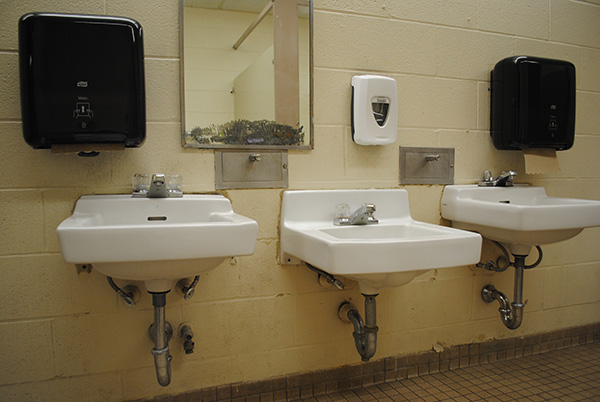
In 2017 the state of Connecticut provided a one-time grant to low-performing school districts for use in upgrading and repairs to school facilities. A portion of this grant was used to improve the student restrooms in the elementary schools. We had a problem that would have taken years of funding by the town to renovate the restrooms. We took advantage of an unexpected source of funds from the state.
We had to make a decision. With estimates of $100,000 for contractors to renovate the restrooms, we would have been severely limited in the amount of restrooms we could have renovated. In order to stretch the allocated funds, it was decided that as much of the work as possible would be accomplished by using in-house employees. The only contract work was tile repair or replacement.
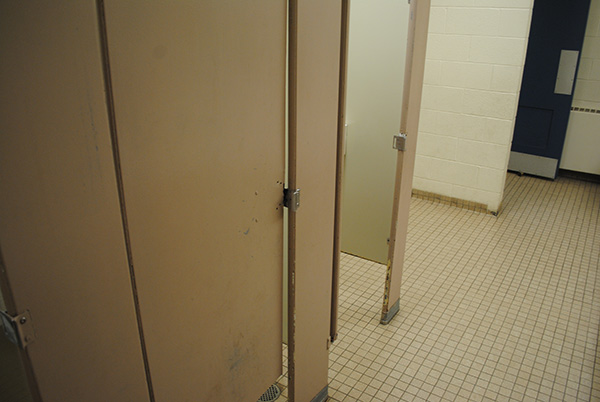
We also took advantage of the opportunity to address some problems with the existing restrooms and to incorporate energy and conservation measures. We were presented with problems created by the student body that were clogging of sink drains so water could be left running to floor the restrooms, failure of students to flush toilets and urinals along with the use of paper towels to clog toilets. We addressed this by installing automatic flush valves on the toilets, waterless urinals, metering faucets on sinks and electric hand dryers. New phenolic stalls and partitions were installed along with energy saving LED lighting and new ceilings.
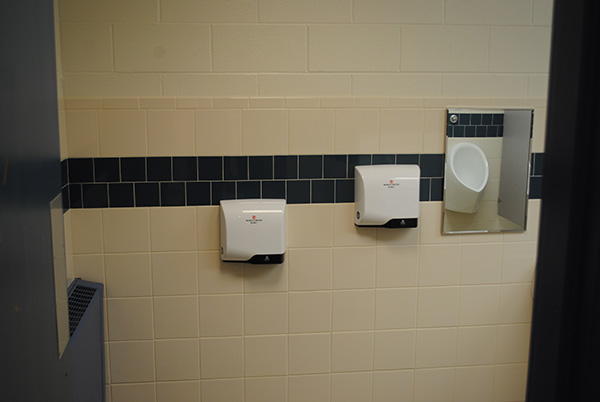
We faced the challenge of a limited budget and four schools with 18 student restrooms to renovate. We also faced reluctance within the maintenance department to the new fixtures and how they would operate. Through careful bidding, we were able to lower the material cost to an average of $18,000 per restroom. Demolition, electrical, plumbing, mirrors, partition installation and ceiling work was all accomplished by in-house employees.
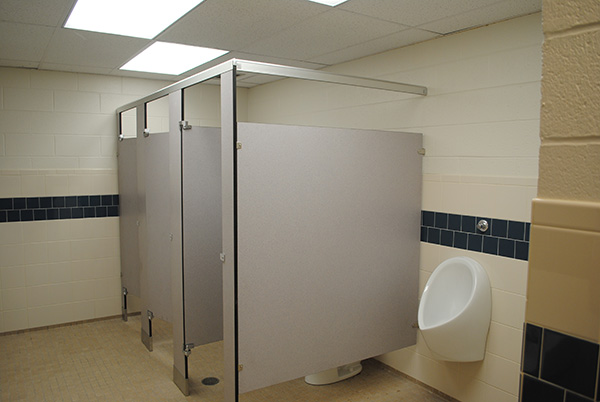
It was not feasible to eliminate the water lines to the urinals so we had to provide an aesthetic way to seal off the old water feeds. The team manufactured sections of chrome tubing and chrome caps to accomplish this. The team also worked hard to insure that all the new fixtures met all the ADA requirements and provided the proper height of fixtures for the grade level being served.
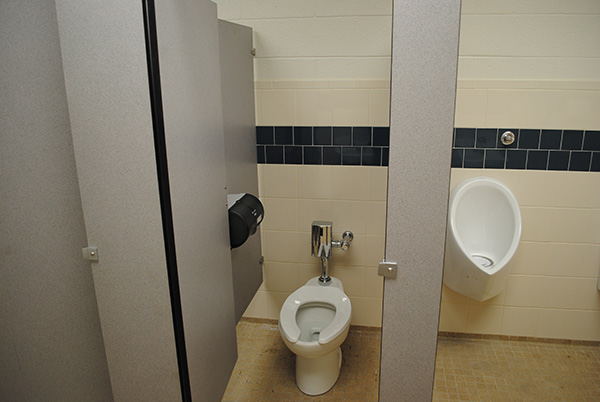
I count the success of this project in multiple ways the students received 21st Century restrooms that were clean,well lit, and energy efficient and that helped conserve our natural resources. The town did not have to fund these renovations, and probably most significant was the knowledge and confidence learned by the in-house staff of their ability to accomplish this level of renovation and quality of work, which has carried through to numerous other projects.
In-House Participants
Mark Light electrical, heating, plumbing; Randy Kellarson ceiling, partitions, demolition; Danny Deptula hand dryers, lighting; Ron Paradis painting, demolition; Wayne Donaldson design bidding
↑ Back to top













